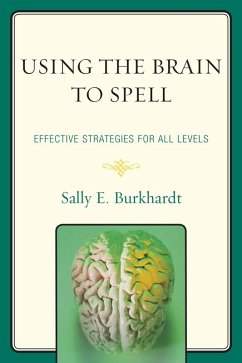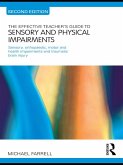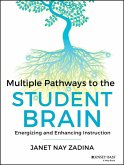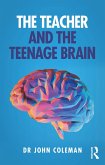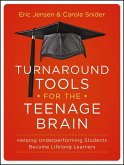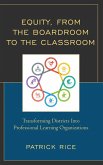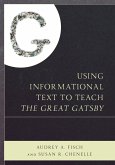32,95 €
32,95 €
inkl. MwSt.
Sofort per Download lieferbar

16 °P sammeln
32,95 €
Als Download kaufen

32,95 €
inkl. MwSt.
Sofort per Download lieferbar

16 °P sammeln
Jetzt verschenken
Alle Infos zum eBook verschenken
32,95 €
inkl. MwSt.
Sofort per Download lieferbar
Alle Infos zum eBook verschenken

16 °P sammeln
- Format: PDF
- Merkliste
- Auf die Merkliste
- Bewerten Bewerten
- Teilen
- Produkt teilen
- Produkterinnerung
- Produkterinnerung

Bitte loggen Sie sich zunächst in Ihr Kundenkonto ein oder registrieren Sie sich bei
bücher.de, um das eBook-Abo tolino select nutzen zu können.
Hier können Sie sich einloggen
Hier können Sie sich einloggen
Sie sind bereits eingeloggt. Klicken Sie auf 2. tolino select Abo, um fortzufahren.

Bitte loggen Sie sich zunächst in Ihr Kundenkonto ein oder registrieren Sie sich bei bücher.de, um das eBook-Abo tolino select nutzen zu können.
This book offers practical advice to teachers unsure of how to teach spelling. Filled with student-centered wisdom, Burkhardt grounds her methods in both theory and practice, providing logical rules and hands-on exercises to keep students actively engaged.
- Geräte: PC
- mit Kopierschutz
- eBook Hilfe
- Größe: 1.41MB
Andere Kunden interessierten sich auch für
![The Effective Teacher's Guide to Sensory and Physical Impairments (eBook, PDF) The Effective Teacher's Guide to Sensory and Physical Impairments (eBook, PDF)]() Michael FarrellThe Effective Teacher's Guide to Sensory and Physical Impairments (eBook, PDF)28,95 €
Michael FarrellThe Effective Teacher's Guide to Sensory and Physical Impairments (eBook, PDF)28,95 €![Multiple Pathways to the Student Brain (eBook, PDF) Multiple Pathways to the Student Brain (eBook, PDF)]() Janet ZadinaMultiple Pathways to the Student Brain (eBook, PDF)17,99 €
Janet ZadinaMultiple Pathways to the Student Brain (eBook, PDF)17,99 €![Brain Science for Principals (eBook, PDF) Brain Science for Principals (eBook, PDF)]() Brain Science for Principals (eBook, PDF)26,95 €
Brain Science for Principals (eBook, PDF)26,95 €![The Teacher and the Teenage Brain (eBook, PDF) The Teacher and the Teenage Brain (eBook, PDF)]() John ColemanThe Teacher and the Teenage Brain (eBook, PDF)23,95 €
John ColemanThe Teacher and the Teenage Brain (eBook, PDF)23,95 €![Turnaround Tools for the Teenage Brain (eBook, PDF) Turnaround Tools for the Teenage Brain (eBook, PDF)]() Eric JensenTurnaround Tools for the Teenage Brain (eBook, PDF)17,99 €
Eric JensenTurnaround Tools for the Teenage Brain (eBook, PDF)17,99 €![Equity, From the Boardroom to the Classroom (eBook, PDF) Equity, From the Boardroom to the Classroom (eBook, PDF)]() Patrick RiceEquity, From the Boardroom to the Classroom (eBook, PDF)24,95 €
Patrick RiceEquity, From the Boardroom to the Classroom (eBook, PDF)24,95 €![Using Informational Text to Teach The Great Gatsby (eBook, PDF) Using Informational Text to Teach The Great Gatsby (eBook, PDF)]() Audrey FischUsing Informational Text to Teach The Great Gatsby (eBook, PDF)24,95 €
Audrey FischUsing Informational Text to Teach The Great Gatsby (eBook, PDF)24,95 €-
-
-
This book offers practical advice to teachers unsure of how to teach spelling. Filled with student-centered wisdom, Burkhardt grounds her methods in both theory and practice, providing logical rules and hands-on exercises to keep students actively engaged.
Produktdetails
- Produktdetails
- Verlag: Bloomsbury eBooks US
- Seitenzahl: 316
- Erscheinungstermin: 16. September 2010
- Englisch
- ISBN-13: 9798216293354
- Artikelnr.: 75141055
- Verlag: Bloomsbury eBooks US
- Seitenzahl: 316
- Erscheinungstermin: 16. September 2010
- Englisch
- ISBN-13: 9798216293354
- Artikelnr.: 75141055
- Herstellerkennzeichnung Die Herstellerinformationen sind derzeit nicht verfügbar.
Sally E. Burkhardt is a retired English teacher, who taught in the middle grades for more than fourteen years. She has also served as a Fellow in the Capital Writing Project at Virginia Commonwealth University. Visit her website at braintospell.com.
Chapter 1 In the Beginning - Underlying Educational Principles
Chapter 2 Priming the Spelling Pump - Basic Strategies that Promote
Spelling Ability
Chapter 3 Using Logic to Spell - Teaching Poor Spellers to Apply Sound -
Letter Strategies
Chapter 4 Focusing on Letter Patterns - Helping Weak Spellers to Use
Visualization Strategies
Chapter 5 Eye Openers - Activities to Help Poor Spellers to Notice and
Remember Common Deviant Letter Combinations in Words
Chapter 6 Rules Rule - Learning to Apply Spelling Rules Will Improve
Spelling Ability
Chapter 7 Which One? - Teaching Students Memory Trick Writing to Remember
Homonyms and Words Commonly Confused
Chapter 8 Fine Tuning - Activities for Advanced Spellers
Part 9 Appendixes
Chapter 10 A.Richard J. Gentry's List of 500 Most Frequently Used Words in
Childrenís Writing Reorganized by Patterns
Chapter 11 B.Example Words Illustrating Multiple Spellings of the Schwa
Sound
Chapter 12 C.A Source List of Multi-Syllable Words for Further Logical
Spelling Practice
Chapter 13 D.Student Assignment Sheets to Reinforce Logical Spelling
Principles
Chapter 14 E.Student Assignment for Answering Questions on Logical Spelling
Principles
Chapter 15 F.Word Bank of Words Containing Deviant Letter Patterns
Chapter 16 G.Word Bank of Words Containing Double Consonants
Chapter 17 H.List of Tongue Twisters in Alphabetical Order According to
Each Twister's Beginning Consonant
Chapter 18 I.Spelling Rules Science Key
Chapter 19 J.Word Bank for Application of Basic Spelling Rules
Chapter 20 K.Basic Spelling Rules in Outline Format
Chapter 21 L.Word Bank for Application of Spelling Rules for Doubling a
Final Consonant
Chapter 22 M.Word Bank of Exceptions to Spelling Rules
Chapter 23 N.Source List for Writing Memory Tricks for Spellings of
Homonyms
Chapter 24 O.Student Worksheet for Spelling Correctly "their," "there,"
"they're," "to," "too," and "two"
Chapter 25 P.Source List for Writing Memory Tricks for Spellings of Words
Often Confused
Chapter 26 Q.List of Words that Have Interesting Entomologies
Chapter 27 R.Student Worksheet for Guessing the Meanings of Vocabulary
Words Used in Context
Chapter 28 S. Noun, Verb, Adjective, and Adverb Suffixes
Chapter 29 T.Words that Each Have a Minimum of Four Grammatical Forms
Chapter 30 U.Word Web Generating from the Roots "-Spec-," "-Spect-," and
"-Spic-"
Chapter 31 V.Magniloquence Word List
Chapter 2 Priming the Spelling Pump - Basic Strategies that Promote
Spelling Ability
Chapter 3 Using Logic to Spell - Teaching Poor Spellers to Apply Sound -
Letter Strategies
Chapter 4 Focusing on Letter Patterns - Helping Weak Spellers to Use
Visualization Strategies
Chapter 5 Eye Openers - Activities to Help Poor Spellers to Notice and
Remember Common Deviant Letter Combinations in Words
Chapter 6 Rules Rule - Learning to Apply Spelling Rules Will Improve
Spelling Ability
Chapter 7 Which One? - Teaching Students Memory Trick Writing to Remember
Homonyms and Words Commonly Confused
Chapter 8 Fine Tuning - Activities for Advanced Spellers
Part 9 Appendixes
Chapter 10 A.Richard J. Gentry's List of 500 Most Frequently Used Words in
Childrenís Writing Reorganized by Patterns
Chapter 11 B.Example Words Illustrating Multiple Spellings of the Schwa
Sound
Chapter 12 C.A Source List of Multi-Syllable Words for Further Logical
Spelling Practice
Chapter 13 D.Student Assignment Sheets to Reinforce Logical Spelling
Principles
Chapter 14 E.Student Assignment for Answering Questions on Logical Spelling
Principles
Chapter 15 F.Word Bank of Words Containing Deviant Letter Patterns
Chapter 16 G.Word Bank of Words Containing Double Consonants
Chapter 17 H.List of Tongue Twisters in Alphabetical Order According to
Each Twister's Beginning Consonant
Chapter 18 I.Spelling Rules Science Key
Chapter 19 J.Word Bank for Application of Basic Spelling Rules
Chapter 20 K.Basic Spelling Rules in Outline Format
Chapter 21 L.Word Bank for Application of Spelling Rules for Doubling a
Final Consonant
Chapter 22 M.Word Bank of Exceptions to Spelling Rules
Chapter 23 N.Source List for Writing Memory Tricks for Spellings of
Homonyms
Chapter 24 O.Student Worksheet for Spelling Correctly "their," "there,"
"they're," "to," "too," and "two"
Chapter 25 P.Source List for Writing Memory Tricks for Spellings of Words
Often Confused
Chapter 26 Q.List of Words that Have Interesting Entomologies
Chapter 27 R.Student Worksheet for Guessing the Meanings of Vocabulary
Words Used in Context
Chapter 28 S. Noun, Verb, Adjective, and Adverb Suffixes
Chapter 29 T.Words that Each Have a Minimum of Four Grammatical Forms
Chapter 30 U.Word Web Generating from the Roots "-Spec-," "-Spect-," and
"-Spic-"
Chapter 31 V.Magniloquence Word List
Chapter 1 In the Beginning - Underlying Educational Principles
Chapter 2 Priming the Spelling Pump - Basic Strategies that Promote
Spelling Ability
Chapter 3 Using Logic to Spell - Teaching Poor Spellers to Apply Sound -
Letter Strategies
Chapter 4 Focusing on Letter Patterns - Helping Weak Spellers to Use
Visualization Strategies
Chapter 5 Eye Openers - Activities to Help Poor Spellers to Notice and
Remember Common Deviant Letter Combinations in Words
Chapter 6 Rules Rule - Learning to Apply Spelling Rules Will Improve
Spelling Ability
Chapter 7 Which One? - Teaching Students Memory Trick Writing to Remember
Homonyms and Words Commonly Confused
Chapter 8 Fine Tuning - Activities for Advanced Spellers
Part 9 Appendixes
Chapter 10 A.Richard J. Gentry's List of 500 Most Frequently Used Words in
Childrenís Writing Reorganized by Patterns
Chapter 11 B.Example Words Illustrating Multiple Spellings of the Schwa
Sound
Chapter 12 C.A Source List of Multi-Syllable Words for Further Logical
Spelling Practice
Chapter 13 D.Student Assignment Sheets to Reinforce Logical Spelling
Principles
Chapter 14 E.Student Assignment for Answering Questions on Logical Spelling
Principles
Chapter 15 F.Word Bank of Words Containing Deviant Letter Patterns
Chapter 16 G.Word Bank of Words Containing Double Consonants
Chapter 17 H.List of Tongue Twisters in Alphabetical Order According to
Each Twister's Beginning Consonant
Chapter 18 I.Spelling Rules Science Key
Chapter 19 J.Word Bank for Application of Basic Spelling Rules
Chapter 20 K.Basic Spelling Rules in Outline Format
Chapter 21 L.Word Bank for Application of Spelling Rules for Doubling a
Final Consonant
Chapter 22 M.Word Bank of Exceptions to Spelling Rules
Chapter 23 N.Source List for Writing Memory Tricks for Spellings of
Homonyms
Chapter 24 O.Student Worksheet for Spelling Correctly "their," "there,"
"they're," "to," "too," and "two"
Chapter 25 P.Source List for Writing Memory Tricks for Spellings of Words
Often Confused
Chapter 26 Q.List of Words that Have Interesting Entomologies
Chapter 27 R.Student Worksheet for Guessing the Meanings of Vocabulary
Words Used in Context
Chapter 28 S. Noun, Verb, Adjective, and Adverb Suffixes
Chapter 29 T.Words that Each Have a Minimum of Four Grammatical Forms
Chapter 30 U.Word Web Generating from the Roots "-Spec-," "-Spect-," and
"-Spic-"
Chapter 31 V.Magniloquence Word List
Chapter 2 Priming the Spelling Pump - Basic Strategies that Promote
Spelling Ability
Chapter 3 Using Logic to Spell - Teaching Poor Spellers to Apply Sound -
Letter Strategies
Chapter 4 Focusing on Letter Patterns - Helping Weak Spellers to Use
Visualization Strategies
Chapter 5 Eye Openers - Activities to Help Poor Spellers to Notice and
Remember Common Deviant Letter Combinations in Words
Chapter 6 Rules Rule - Learning to Apply Spelling Rules Will Improve
Spelling Ability
Chapter 7 Which One? - Teaching Students Memory Trick Writing to Remember
Homonyms and Words Commonly Confused
Chapter 8 Fine Tuning - Activities for Advanced Spellers
Part 9 Appendixes
Chapter 10 A.Richard J. Gentry's List of 500 Most Frequently Used Words in
Childrenís Writing Reorganized by Patterns
Chapter 11 B.Example Words Illustrating Multiple Spellings of the Schwa
Sound
Chapter 12 C.A Source List of Multi-Syllable Words for Further Logical
Spelling Practice
Chapter 13 D.Student Assignment Sheets to Reinforce Logical Spelling
Principles
Chapter 14 E.Student Assignment for Answering Questions on Logical Spelling
Principles
Chapter 15 F.Word Bank of Words Containing Deviant Letter Patterns
Chapter 16 G.Word Bank of Words Containing Double Consonants
Chapter 17 H.List of Tongue Twisters in Alphabetical Order According to
Each Twister's Beginning Consonant
Chapter 18 I.Spelling Rules Science Key
Chapter 19 J.Word Bank for Application of Basic Spelling Rules
Chapter 20 K.Basic Spelling Rules in Outline Format
Chapter 21 L.Word Bank for Application of Spelling Rules for Doubling a
Final Consonant
Chapter 22 M.Word Bank of Exceptions to Spelling Rules
Chapter 23 N.Source List for Writing Memory Tricks for Spellings of
Homonyms
Chapter 24 O.Student Worksheet for Spelling Correctly "their," "there,"
"they're," "to," "too," and "two"
Chapter 25 P.Source List for Writing Memory Tricks for Spellings of Words
Often Confused
Chapter 26 Q.List of Words that Have Interesting Entomologies
Chapter 27 R.Student Worksheet for Guessing the Meanings of Vocabulary
Words Used in Context
Chapter 28 S. Noun, Verb, Adjective, and Adverb Suffixes
Chapter 29 T.Words that Each Have a Minimum of Four Grammatical Forms
Chapter 30 U.Word Web Generating from the Roots "-Spec-," "-Spect-," and
"-Spic-"
Chapter 31 V.Magniloquence Word List
